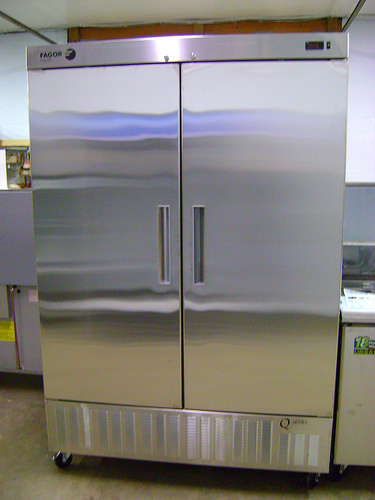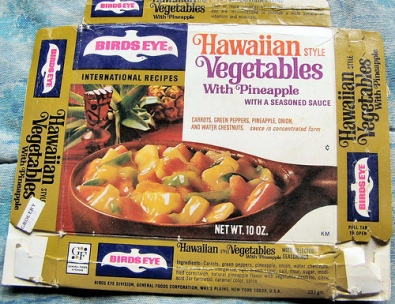As the freezing winter temperatures take hold it is easy to forget that there is always a spot in the kitchen that remains around 0 degrees Fahrenheit (-17C) all through the year.
Frozen food is in our kitchens today thanks to Clarence Birdseye who was born in Brooklyn, New York in 1886. While working in Canada he was taught by the Inuit people how to fast freeze fish and in temperatures of -40 degrees Fahrenheit (-40C) the fish froze almost instantaneously. These Arctic people preserved both meat and fish in barrels of sea water that was rapidly frozen by the freezing temperatures. He discovered that the food tasted fresh when cooked months later and he put this down to the fast freeze techniques used by the Inuits.

Returning home Clarence Birdseye, on a tiny budget, began inventing a system of packing fresh food into waxed cardboard boxes and flash freezing under high pressure. In 1929 he sold his patents and trademarks for $22 million to the Goldman-Sachs Trading Corporation and the Postum Company (to become the General Foods Corporation). In 1930 the first quick frozen vegetables as well as fruits, seafood and meat went on sale to the public in Springfield, Massachusetts still keeping the name of ‘Birds Eye Frosted Foods’.

Clarence Birdseye then moved onto refrigerated grocery display cases followed by refrigerated boxcars to transport frozen goods by rail across the country. The popularity of the fast frozen food grew but it wasn’t until after World War II that the ‘deep freeze’, as it was called, became popular in homes around the country. In 1946 frozen French fries became available, followed by pizza in 1949. The 1950’s brought frozen fish sticks and waffles and the frozen goods market became worth $1 billion. It was during the 1950’s and 1960’s that saw advances such as automatic defrosting and automatic ice making. With microwave meals becoming popular during the 1970’s, the frozen food market changed again to bring us frozen food to be microwaved. By 1999 the total retail sales of frozen foods in the United States reached a record $25 billion.

A vapor compression cycle is used in most household refrigerators, refrigerator–freezers and freezers today which have come a long way since 3,000 BC when the ancient Chinese people began using ice cellars to preserve their food throughout the chilly winters.
Photos courtesy of flickr - localgoogleguru, epSos.de, mankatt